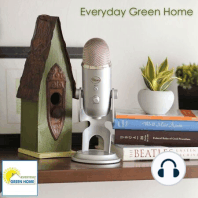35 min listen
Green Screen HVAC Filters with Gay Harris
ratings:
Length:
35 minutes
Released:
Mar 25, 2020
Format:
Podcast episode
Description
We have Gay Harris as our guest for today's podcast. Gay and her husband, Mickey, are the founders and owners of a company called Superior Air Quality, and they are the suppliers of Green Screen HVAC Filters. How it all started Mickey and Gay have been working together for years. A while back, when they were both working for a company that was doing some insulation work in Austin to create better airflow in attics, the original owner of Green Screen came and spoke to them about adding the Green Screen as one of the products on their tool belt. They decided to accept the offer, and from then on, the Green Screen business just grew and grew. Gay and Mickey became the sales managers for the business, and they ended up working for the company for nine years. Then, about three-and-a-half-years ago, the original owners asked Gay and Mickey to take over their business because they wanted to retire. Gay and Mickey have been committed to the Green Screen for more than twelve years now. What the Green Screen is, and how it differs from other filters The Green Screen is an air filter for your heating and cooling system. It goes into the air conditioning unit in place of either the regular, pleated air filters or any other kinds of filters that are available. When Gay and Mickey started selling for the Green Screen company, they looked at all the independent studies that had been done on filters, to make sure that there was nothing better available out there. And because of the superior construction of the Green Screen, they did not manage to find anything better. The Green Screen layers the dirt into the filter according to the size of the particles, so the air can still get through the filter. In the national test, the Green Screen collected about twice as much dirt as the allergen-feeding kind did. And it has thirty percent better airflow! Face loading With the pleated filters, all the dirt particles, small, medium, and large, end up on one surface. This is known as "face loading" by the industry. It means that more fabric is necessary for the filter to collect more dirt particles, and the more pleats there are, the more you have to pay for the filter. And once these filters start filling up with dirt, the airflow starts getting dammed up pretty quickly. So it becomes very expensive to replace these filters so often. The problem with other filters The residential filters that you can buy at the store either collect particles, because they have tighter woven fabric, or they let the air go through. And neither one is a good solution because if they let the air go through, they also let the dirt go through. And if they collect the small particles, they're not letting the air go through. So when Gay and Mickey found the Green Screen, they fell in love with it! Getting off allergy medicine Gay and Mickey were able to go off their allergy medicine because the Green Screen helps to remove even the microscopic dirt particles. Their average customers have noticed that there's about fifty percent less dust in their homes when they use the Green Screen. The location of the filter When you're buying or building a new house, you're never told that the location of the filter has a lot to do with how much, or how little dust is in the house. The filter that's closer to the ground will collect more of the heavy dust. And the higher you go, the less heavy dust will be collected. The Green Screen filter works well for all the levels of dust, including the microscopic particles. Where the filter should be located It's best not to put the filters up in the attic. Although placing them there will keep the unit clean, up there, they won't keep all the dust away. If you're building a custom home, it's best to locate the filters about the foot off the ground. That way, you will have way less dust in the house. If you'd like your environment to have less dust, put your filters where they will catch the most dust. And although it's a bit more effort to c
Released:
Mar 25, 2020
Format:
Podcast episode
Titles in the series (100)
Eating for Health - Ours and the World with Hannah Levbarg: You can make a bigger difference than you think to the environment by making small changes to what’s on your plate. We’re talking about food today, and we have Hannah Levbarg joining us to talk about how to green your plate. Hannah will be... by Everyday Green Home
